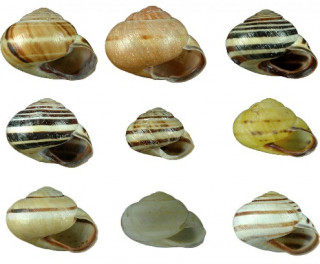Defining biodiversity
Often used and sometimes misunderstood, biodiversity is more than just the number of living species, it is the whole diversity of living things. Easy to understand but difficult to define precisely, discover what biodiversity is!
Biodiversity, a product of evolution
The term « biodiversity » is recent and has been diffusing since the international conference of Rio de Janeiro in 1992. Literally, this term designs the diversity of the living beings. To understand biodiversity we have to place ourselves in the frame of the evolution of the living things, since the biodiversity we observe today stems from this evolution. On large time scales, biodiversity is not fixed, it changes depending on the relations between the organisms and their environment. It is then difficult to study biodiversity as it depends on many links, the organisms with each other and with their environment. To illustrate this term, Robert Barbault, professor of Ecologie, had a nice analogy: “biodiversity is the living fabric of the planet”. Biodiversity can thus be observed at different scales, since not one gives a general view. To simplify, three scales are generally studied: that of the species, of the genes and of the ecosystems.
The diversity of species
Since many centuries, the diversity of life has been described from the species. Even now, this level is very studied and is a first step to understand the living things, seeing as a huge number of species remains to be described. The number of species present is often the only criterion to study the diversity. If this method seems easy a priori, it is not representative of what is really biodiversity and gives a distorted outlook. Indeed, considering the evolution, the species will change over time, some species can be very close, or one species can have organisms with very different forms. This is the case of Hedge snails, snails of the same species with very different colors of shell!
The genetic diversity
To study this diversity within species, we can use the shape of the organisms, but the differences are often very small, so other methods can be implemented. This is the case of genetics. Genes are transmitted between an individual and its descendance and variations of form between individuals can come from a difference to the genes level. The different versions of the same gene are called alleles. Studying genes enables us to see the differences between species and within a given species, between the individuals. But if the diversity of the living beings can be linked to these genes, they are not the only factors, and do not inform us directly on the organisms’ relations with their environment.
The diversity of ecosystems
The last level, that of the ecosystem, goes beyond the species level by taking into account the organisms’ relations among each other (whether they are the same species or nor) and with their environment. The ecosystems, in other words the organisms, their environment, and the relations they have, can be very diverse because they include forests and rivers, but also animals intestines and puddles!
The three levels of diversity, consisted of species, genes and ecosystem, show the facets of biodiversity but it is comparing them that enables us to comprehend the « living fabric of the planet ».
Biodiversity in the city?
Biodiversity in the city? The grey of the concrete dominates in the business district of La Défense. However, the curious walker can discover astonishing wild urban biodiversity. Plants, mushrooms, insects, spiders, birds, mammals, etc. settle in the city at the slightest opportunity. Let's discover this largely ignored biodiversity in the company of several naturalists: Maxime Zucca and Julien Birard from Natureparif, Nathalie Machon from the Muséum national d'Histoire naturelle, Mathieu de Flores from the Office pour les insectes et leur environnement (OPIE) and Michel Colombe. They led a nature outing at La Défense for agents of the Ministère de la Transition écologique on World Biodiversity Day (22 May). This was also an opportunity to discover how each of us can contribute to a better understanding of biodiversity through citizen sciences (for example, with the observatories Garden Birds, Wild in my street or the Photographic monitoring of pollinating insects (SPIPOLL). Let's open our eyes and change our outlook!
Biodiversity, a recent concept.
When it comes to biodiversity, its origins and place in the recent discussions, as well as in education, more and more people agree to say that the conservation of ecosystems is now a major issue for teachers to approach.
Find here a selection of articles and resources regarding this subject on the Muséum's distance learning platform.

